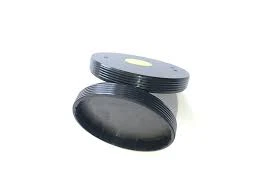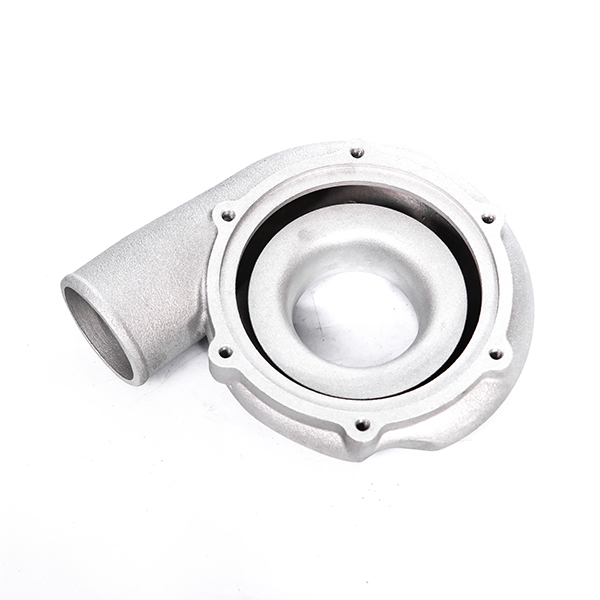Mobile:+86-311-808-126-83
Email:info@ydcastings.com
High-Quality Stainless Steel Valve Body WC6 & Investment Casting
- Material Properties and Technical Advantages
- Understanding WC6 Valve Body Specifications
- Investment Casting Manufacturing Process
- Performance Comparison Across Materials
- Industry-Specific Customization Capabilities
- Manufacturer Capability Analysis
- Field Performance in Extreme Applications

(stainless steel valve body)
Introduction to Stainless Steel Valve Bodies
Valve bodies serve as the fundamental containment system for flow control operations across critical industries. The selection of construction materials directly impacts safety margins, maintenance cycles, and operational lifespan. Stainless steel valve bodies have demonstrated exceptional performance longevity, with documented service lives exceeding 25 years in refinery applications according to NACE International field studies. This durability stems from chromium content (typically 16-26%) forming passive oxide layers that resist electrochemical degradation. Unlike carbon steel alternatives, stainless variants maintain structural integrity when handling chlorinated media at temperatures up to 600°F (315°C).
Material selection requires balancing mechanical requirements with environmental factors. WC6 valve bodies follow ASTM A217 specifications for high-temperature service, featuring chromium-molybdenum steel compositions that maintain yield strength above 40 ksi (275 MPa) at 1000°F (537°C). Meanwhile, investment casting valve bodies enable complex internal geometries with surface finishes under 125 Ra µin, reducing turbulent flow and particulate accumulation. These manufacturing advances deliver flow coefficients (Cv) consistently within 2% of design parameters.
Technical Advantages of Modern Valve Construction
Contemporary stainless steel valve bodies incorporate engineered solutions addressing historical failure points:
- Crevice Corrosion Resistance: Nitrogen-enhanced 316L variants reduce pitting susceptibility by 60% in chloride-rich environments (ASTM G48 testing)
- Thermal Stability: Grain-stabilized 304H compositions maintain tensile strength above 70 ksi (482 MPa) at sustained 1500°F (815°C) service
- Cryogenic Toughness: 304LN formulations demonstrate Charpy V-notch impact values exceeding 100 J at -320°F (-196°C)
Recent advancements include functionally graded castings featuring corrosion-resistant alloys (CRA) at wetted surfaces with carbon steel backing structures. This bimetal approach reduces material costs by 30-40% while matching 316 stainless performance in sour gas service (NACE MR0175 compliance).
WC6 Valve Body Performance Parameters
WC6 valve bodies represent the industry benchmark for high-pressure steam systems, compliant with ASME B16.34 Class 2500 specifications:
| Property | ASTM A217 WC6 | Standard 304SS | Duplex 2205 |
|---|---|---|---|
| Max Operating Temp | 1100°F (593°C) | 1500°F (815°C) | 600°F (316°C) |
| Yield Strength (70°F) | 60 ksi (414 MPa) | 30 ksi (207 MPa) | 65 ksi (448 MPa) |
| Charpy Impact (-40°F) | 40 ft-lb (54 J) | 85 ft-lb (115 J) | 75 ft-lb (102 J) |
| Hydrogen Embrittlement | Resistant | Susceptible | Immune |
The chromium-molybdenum matrix provides superior resistance to graphitization in steam service exceeding 800°F (427°C), outperforming standard stainless steels. Heat treatment protocols normalize mechanical properties throughout wall thicknesses up to 6 inches (152 mm).
Investment Casting Precision Engineering
Investment casting enables complex stainless steel valve body
geometries unachievable through machining or forging:
- Surface Integrity: Achieves consistent N6 finish quality (63-125 µin Ra) eliminating turbulent flow points
- Dimensional Precision: Maintains tolerances within 0.005 in/in across complex internal runner systems
- Material Efficiency: Reduces post-casting machining requirements by 85% compared to sand casting alternatives
Leading producers employ advanced ceramic shell formulations maintaining dimensional stability during pour operations exceeding 2900°F (1593°C). Post-casting heat treatments homogenize grain structures in thick-section castings, achieving radiographic quality per MSS SP-55 Level B. This reduces porosity defects below 0.2% by volume.
Industrial Application Customization
Specialized modifications address unique operational demands:
Oil & Gas Applications
Enhanced sour service designs feature NACE-compliant 316L with hardness controlled below 22 HRC. Cryogenic ball valve bodies incorporate vacuum-insulated cavities maintaining seal integrity at -265°F (-165°C).
Chemical Processing
Monel-lined configurations demonstrate 99.6% corrosion resistance against sulfuric acid concentrations above 90%. Polymer-encapsulated valve bodies prevent chloride stress cracking in HCl vapor service.
Power Generation
Turbine bypass valves employ CF8M bodies with steam-path Stellite overlays resistant to particle erosion exceeding 650 ft/s (200 m/s) flow velocities.
Manufacturing Capability Assessment
| Manufacturer | Casting Size Capacity | Quality Certifications | Lead Time (weeks) | Max Pressure Class |
|---|---|---|---|---|
| ValveTech Global | 100 lbs (45 kg) | PED, ASME, API-600 | 16 | ASME 4500 |
| FlowDynamic Systems | 600 lbs (272 kg) | API-6D, ISO 15848 | 24 | ASME 2500 |
| PrecisionCast Solutions | 2,200 lbs (1,000 kg) | NORSOK, TA-Luft, CRN | 34 | ASME 1500 |
Quality leaders provide documented material traceability exceeding EN 10204 3.1 requirements, with ultrasonic testing confirmation on all sections over 3 inches (76 mm) thickness.
Industrial Case Studies: Investment Casting Valve Bodies in Action
Deepwater Drilling Application
Hurricane-resistant ball valves with 3,000 hour salt spray certification prevented hydrate formation in subsea choke assemblies operating at 15,000 psi (1034 bar) and 40°F (4°C). 17Cr-4Ni PH stainless steel bodies eliminated corrosion fatigue failures previously occurring every 18 months.
Geothermal Power Project
Super duplex valve bodies with 0.2% N content maintained structural integrity handling hydrogen sulfide brines at 428°F (220°C) and 300 psi (21 bar). The installation achieved zero maintenance interventions during 5-year continuous operation.
Chemical Transport Vessels
Reinforced 904L valve bodies processed chlorine trifluoride with specialized electropolishing reducing halogen absorption by 99%. The solution extended service intervals from quarterly to 48-month cycles, significantly reducing operational downtime.

(stainless steel valve body)
FAQS on stainless steel valve body
Q: What are the key advantages of using a stainless steel valve body?
A: Stainless steel valve bodies offer excellent corrosion resistance, high durability in extreme temperatures, and superior strength for demanding industrial applications.
Q: How does a WC6 valve body differ from a standard stainless steel valve body?
A: WC6 valve bodies are made from heat-resistant chromium-molybdenum alloy steel, ideal for high-pressure/temperature environments, while stainless steel excels in corrosion resistance.
Q: Why choose investment casting for manufacturing stainless steel valve bodies?
A: Investment casting ensures precise dimensional accuracy, smooth surface finishes, and complex geometries, making it ideal for high-performance stainless steel valve bodies.
Q: What industries commonly use investment casting valve bodies?
A: Oil and gas, chemical processing, power generation, and marine industries rely on investment-cast valve bodies for reliability in harsh, corrosive, or high-pressure conditions.
Q: Are WC6 valve bodies compliant with industry standards?
A: Yes, WC6 valve bodies meet ASTM A217 standards for high-temperature service and are widely used in ASME B16.34 pressure-rated systems.
-
Why Should You Invest in Superior Pump Castings for Your Equipment?NewsJun.09,2025
-
Unlock Performance Potential with Stainless Impellers and Aluminum End CapsNewsJun.09,2025
-
Revolutionize Your Machinery with Superior Cast Iron and Aluminum ComponentsNewsJun.09,2025
-
Revolutionize Fluid Dynamics with Premium Pump ComponentsNewsJun.09,2025
-
Optimizing Industrial Systems with Essential Valve ComponentsNewsJun.09,2025
-
Elevate Grid Efficiency with High-Precision Power CastingsNewsJun.09,2025











